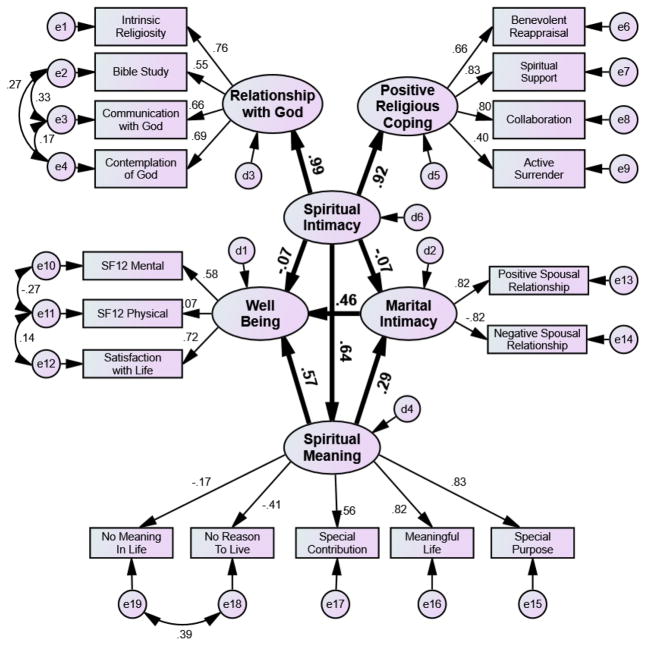Figure 3.
Final causal model (n = 5,720). Spiritual intimacy is the best predictor of one’s marital intimacy and well-being through the lens of spiritual meaning. When one’s relationship with God creates meaning and purpose in one’s life, it positively improves both marital intimacy and well-being. The strongest positive change is seen for individual well-being in that spiritual intimacy, by improving marital intimacy, also improves well-being. Without spiritual meaning in one’s life, one’s relationship with God is associated with a decrease in marital intimacy and well-being. Standardized regression coefficients from structural model are shown. Age and length of relationship are controlled. Structural model of relationship between latent variables is shown with bold-faced arrows and coefficients. All coefficients are statistically significant at p < .005 using bias-corrected 1,000 sample bootstrap. x2 (147) = 2137.07, p < .001, RMSEA = .049 (95% CI = .047, .050), SRMR = .04, NFI .95. Numbers beside latent and manifest variables are squared multiple correlations for all arrows leading into that variable. Numbers on arrows are standardized path coefficients.

